Road Affair is reader-supported and may earn commission from purchases made through links in this article.
When I say Bulgaria, what’s the first thing that comes to your mind? Most likely Sofia, then perhaps the Black Sea, and that’s probably it. Even the most well-traveled among us may have never visited this small country in the Balkans, let alone know its hidden treasures. Bulgaria has amazing and diverse nature, little villages where time seems to have stopped a century ago, and places rich in cultural and historical heritage. There’s so much more to this country than meets the eye. Here are the best places to visit in Bulgaria, so you can really get to know this great nation.

Contents
- 1 1. Sofia
- 2 2. Veliko Tarnovo
- 3 3. Arbanasi
- 4 4. Plovdiv
- 5 5. Ruse
- 6 6. Varna
- 7 7. Pobiti Kamani (The Stone Desert)
- 8 8. Nessebar
- 9 9. Sozopol
- 10 10. Kaliakra
- 11 11. Balchik
- 12 12. Koprivshtitsa
- 13 13. Kazanlak and the Kazanlak Tomb
- 14 14. Etara
- 15 15. Tryavna
- 16 16. Pliska
- 17 17. Veliki Preslav
- 18 18. Belogradchik Rocks & Fortress
- 19 19. Smolyan and Snezhanka
- 20 20. Zlatograd
- 21 21. Trigrad Gorge and Devil’s Throat Cave
- 22 22. Rila Monastery
- 23 23. Seven Rila Lakes
- 24 24. Stob Pyramids
- 25 25. Melnik
1. Sofia
At first sight Bulgaria’s largest city just seems like another busy and modern capital, but there are layers of history that are still being uncovered. The latest discovery happened between 2010 and 2012 when a whole part of the ancient city of Serdica was found during excavation works for one of the metro stations. Some of the most famous attractions in the city include the Alexander Nevsky Cathedral, the Saint Sofia Church with its subterranean museum and the necropolis, the 4th-century Church of St. George, and the UNESCO-awarded Boyana Church. For the museum lovers, Sofia is home to the National History Museum where you can see some of the most famous ancient gold treasures in the world, the National Museum of Natural History, the National Archeology Museum, the National Art Gallery which is housed in the former royal palace, and the Museum of Socialist Art. The nature lovers won’t be disappointed either, as Sofia is located at the foot of the Vitosha Mountain, where you can go hiking and skiing. You’ll find everything from exciting nightlife and affordable accommodation to lovely boutiques and charming cobblestone streets when you visit Sofia.

2. Veliko Tarnovo
One of the best places to visit in all of Europe, Veliko Tarnovo stands out because of its remarkable beauty. The River Yantra meanders through Veliko Tarnovo creating a picturesque setting for this historic northern Bulgarian city. National Revival style houses cling to the hills, making it so easy to fall in love with this inviting city. A lesser known fact is that the city was Bulgaria’s capital between the 12th and 14th century, during the heyday of the Second Bulgarian Empire. When in Veliko Tarnovo, visit Tsarevets – the fortress with ramparts, the king’s castle, and the church on the top of the hill. Go back in time by walking along the cobblestone Gurko Street and shop for handcrafted souvenirs at the Samovodska Charshia. For the most amazing 360-degree views of the city, go to the Asenevtsi Monument. You should also try to visit the art gallery while you’re there.

3. Arbanasi
Arbanasi is a very small village perched on a hill about 5 kilometers away from Veliko Tarnovo. Besides the amazing views of Veliko Tarnovo and Tsarevets, Arbanasi offers quaint cobblestone streets and old houses surrounded by high National Revival style stone fences. Arbanasi is one of the most popular destinations in Bulgaria among the locals. There are numerous hotels and restaurants in this small village. One of the best attractions is the Nativity Church. It has some beautiful frescoes that date back to the 16th and 17th century. You can also visit one of the typical National Revival style houses – Konstantsalieva House – and learn about how people lived in those days.

4. Plovdiv
One of the most ancient cities in Europe and among the best cities to visit in Bulgaria, Plovdiv surprises visitors with its diversity. Located in southern Bulgaria, Plovdiv is like an open-air museum of Bulgaria’s history. Plovdiv used to be one of the major cities in the Roman Empire. Today, you can visit the Roman Amphitheater, which still functions as an open-air theater, the Roman Stadium, the Roman Forum, and the Eirene Residence. You’ll get a totally different vibe from the Old Town which has cobblestone streets and colorful National Revival houses, most of which have been turned into museums. For beautiful views of the city, climb on one of the seven hills on which the city was built. Ancient Plovdiv is on the Tentative List of UNESCO World Heritage Sites. 2019 will be a great year to visit Plovdiv because it will be the European Capital of Culture.

5. Ruse
Ruse is the city with the most aristocratic look in Bulgaria. Located on the Danube River, it was a major economic centre during the National Revival (18th – 19th century) and after the liberation of the country in 1878. Ruse was the gateway for all architectural and cultural influences from Central Europe. Today, the city boasts beautiful architecture in Baroque and neoclassical styles. You can take a boat trip on the Danube or just walk along the river. If you are staying longer in Ruse, you can take a day trip to the Rock-Hewn Churches of Ivanovo where you’ll see a complex of churches, chapels, and monasteries that have earned UNESCO recognition.

6. Varna
One of the country’s top summer destinations, Varna is often referred to as the sea capital of Bulgaria. In the summer it becomes a bustling city with a lot of activities and festivals to keep the city’s guests entertained. There’s an international ballet competition, a jazz festival, a folklore festival, and a music festival, just to name a few. One of the most beautiful places in the city is the Sea Garden – the locals love to go there for a walk. When you have enough of the yellow-sand beaches, the sea, and the sun, you can visit the National Maritime Museum, the Archeological Museum, or Varna Aquarium.

7. Pobiti Kamani (The Stone Desert)
Pobiti Kamani is a natural phenomenon some 20 kilometers west of Varna – perfect for a day trip if you are staying in Varna. It’s Bulgaria’s only desert, and it’s made up of sand dunes and rock formations as well as being home to variety of flora and fauna. There are many theories about the origin of these stone columns that reach up to 7 meters high, but none of them have been proven. These columns are hollow and they look as if they are stuck in the sand. The best way to reach the Stone Desert is by car, there’s a parking area nearby.

8. Nessebar
Nessebar is one of the most beautiful places on the Black Sea Coast. The Old Town has a picturesque setting on a small peninsula jutting out in the sea. Walking towards the Old Town you will pass by one of the last remaining windmills in Bulgaria. Visit the old churches in Nessebar and walk along the Thracian fortifications. Stroll the cobblestone streets lined with 19th-century wooden houses. Nessebar is like an open-air museum revealing 3,000 years of history to its visitors. The ancient city is an UNESCO World Heritage Site and tends to be pretty touristy in the summer.

9. Sozopol
Sozopol is another gem of a place on the Black Sea Coast. Hosting one of the country’s largest art festivals every September, the Old Town is a popular destination among the artsy tourists. Colourful fishing boats and rocky shores complement the 19th-century wooden houses and golden-sand beaches. The New Town is a popular summer resort.
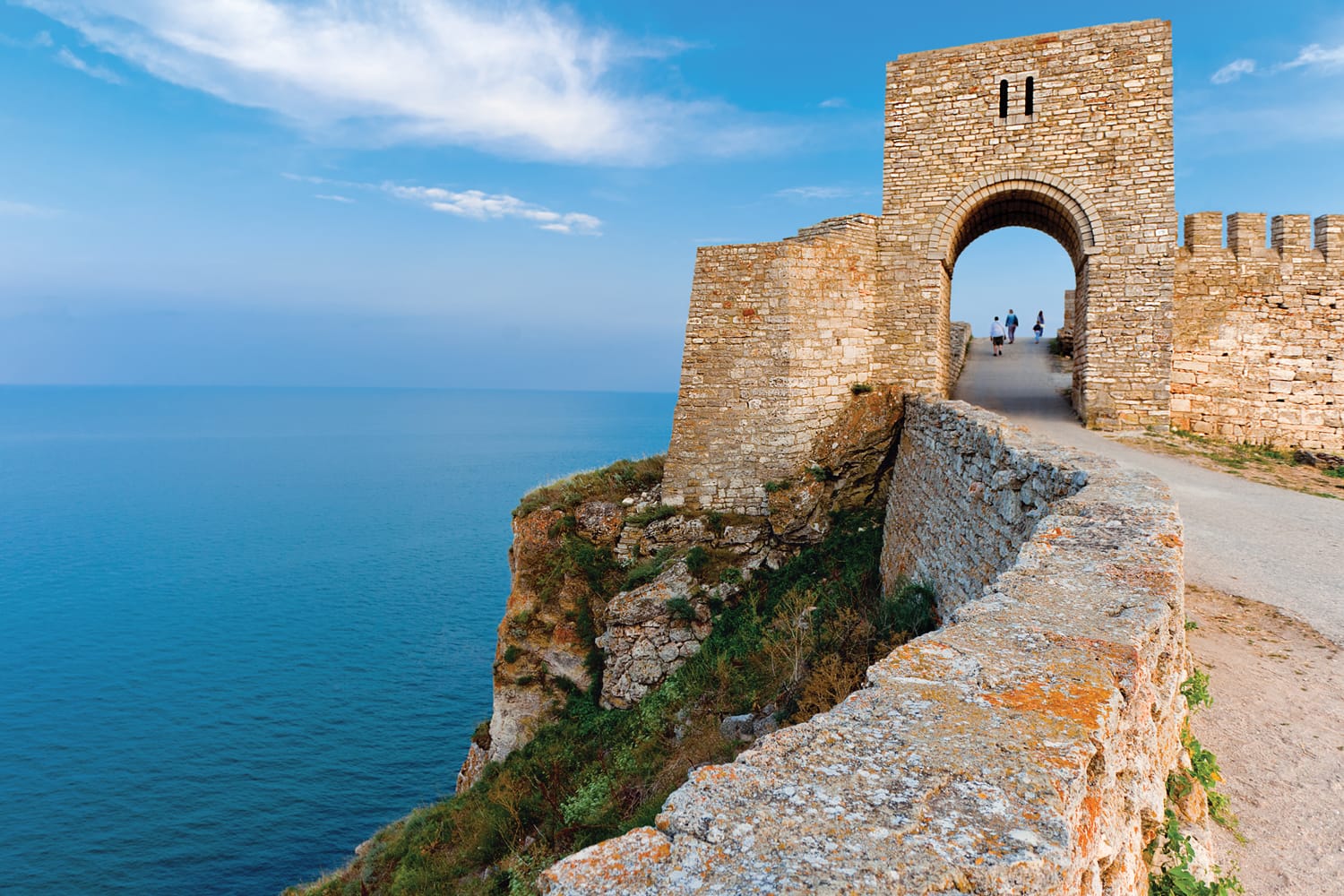
10. Kaliakra
Go off-the-beaten track in Bulgaria and visit Cape Kaliakra on the rough northern Black Sea Coast. Listen to the waves battering the vertical cliffs or stroll along the remains of the medieval fortress and enjoy the stunning views. The legend says that 40 maidens from the nearby village jumped from the edge of the cliff with their hair tied together. They preferred to die rather than be captured by the Ottomans who were invading Bulgaria in the 14th century.

11. Balchik
Balchik is a small town near the northern part of the Black Sea Coast. It’s mostly popular among local tourists, but it’s absolutely worth the visit. A lovely beach, botanical gardens, and a palace are among the must-sees in Balchik. The Palace of Balchik was built as a summer residence for the Romanian Queen Marie of Edinburgh.

12. Koprivshtitsa
This small town, whose name is almost unpronounceable, has been one of the most important historical places in Bulgaria from the time of the National Revival (18th – 19th century). Surrounded by beautiful mountains, Koprivshtitsa is a lovely place that still keeps the spirit of revolutionary Bulgaria and of the April Uprising of 1876. Before visiting Koprivshtitsa, try to read a bit more about Bulgaria’s history to understand its importance. Once every four years Koprivshtitsa hosts the biggest authentic folklore festival in the country.

13. Kazanlak and the Kazanlak Tomb
The most famous attraction in Kazanlak is the Thracian Tomb. The beautiful frescoes in the tomb date back to the 4th century BC and are one of the masterpieces of the Thracian Culture (5th century BC – 1st century AD). However, visitors are not allowed in the real tomb, but in a full-size replica. The Thracian Tomb is one of the ten UNESCO World Heritage Sites in Bulgaria. The best time to visit the town is the first week of June when the famous Rose Festival is held. When visiting Kazanlak, do not miss the Rose Museum to learn everything about the rose oil production in Bulgaria.

14. Etara
Etara is an open-air ethnographic museum located near Gabrovo in northern Bulgaria. There are various workshops where you can see how traditional crafts were practiced in the 18th – 19th century. Etara is a lovely place to visit on a day trip from Veliko Tarnovo or Gabrovo.

15. Tryavna
Tryavna is among the cutest towns in Bulgaria. It’s one of those places with well-preserved typical National Revival architecture. It feels as if you step back in time, but instead of being in one of those open-air-museum type of villages, you are in the middle of a thriving town. Tryavna is famous for its crafts, and you should visit the Daskalov House to admire the wood-carved ceiling pieces and hear the story about how the apprentice woodcarver outdid his master in a competition for the most beautiful ceiling decoration.
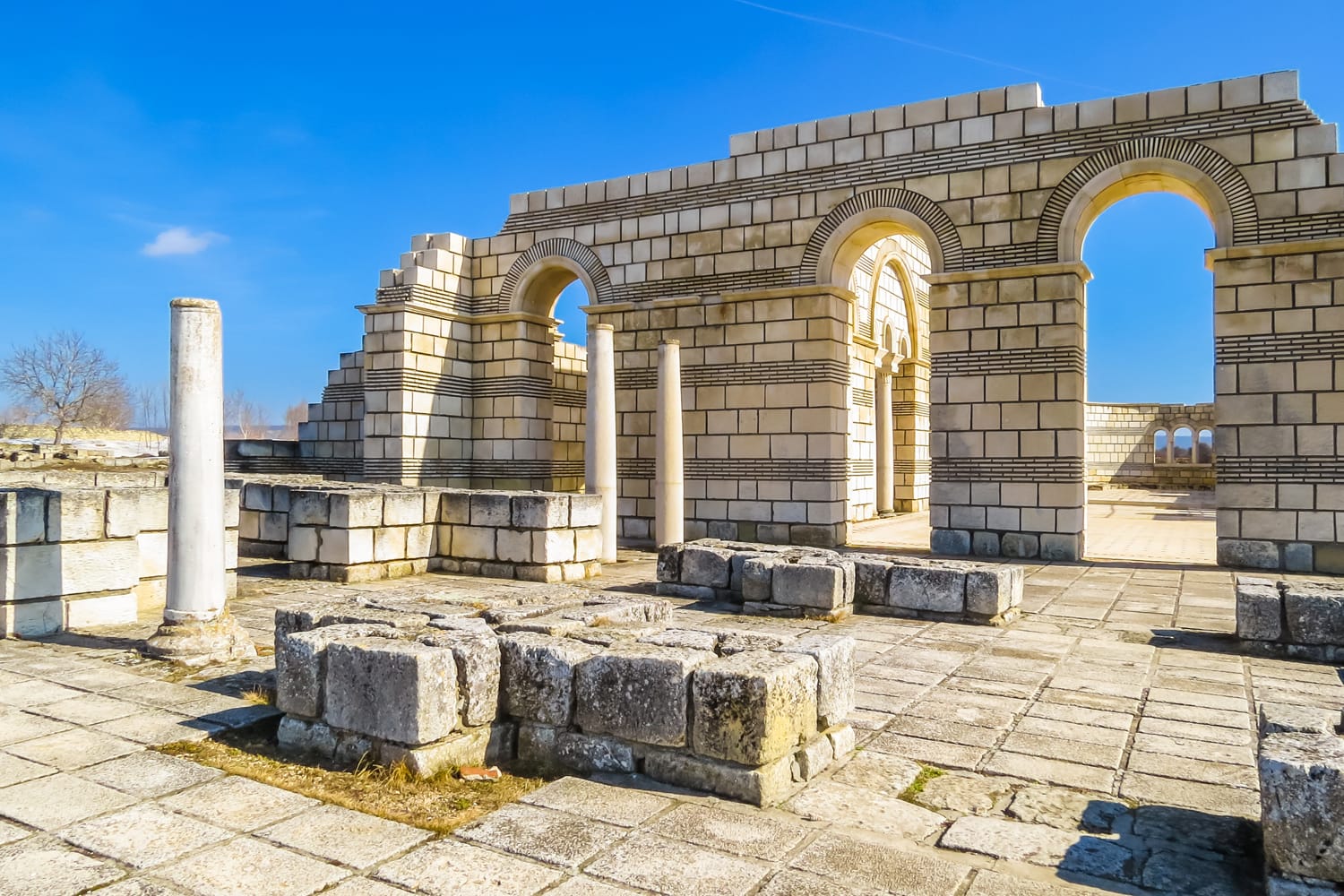
16. Pliska
If you are a history geek, Pliska should be on your bucket list. Pliska was the first capital of the First Bulgarian Empire from 681 – 893 AD. Today there isn’t much left of this once glorious city, but the ruins still give an impression of the amazing place it was. The archeological site is a few kilometers outside of the modern town.

17. Veliki Preslav
Veliki Preslav was the second capital of Bulgaria during the so-called Golden Age (893 – 972 AD). This is the period when the Bulgarian Kingdom was one of the most powerful countries in Europe, which led to a cultural boom. The ruins of Preslav are only a vague reminder of how important this place was during the last century of the Early Middle Ages. When in Veliki Preslav, you should also stop by the local archeological museum. A visit to Veliki Preslav is best when combined with a visit to Pliska.

18. Belogradchik Rocks & Fortress
The Belogradchik Rocks are one of the natural wonders in Bulgaria. These reddish rock sculptures in weird forms and shapes are located in northwest Bulgaria. Most of them resemble animals or people, and there are many legends about the various figures. The Rocks offer a natural defense for the famous Belogradchik Fortress, aka Kaleto. The Belogradchik Rocks are included on the Tentative List of UNESCO World Heritage Sites.

19. Smolyan and Snezhanka
If you love mountains and breathtaking views, you should visit Smolyan. Set up high in the Rhodope Mountains in southern Bulgaria, Smolyan is one of the country’s top destinations for winter sports. In the summer you’ll enjoy the pristine nature. Take the chairlift to Snezhanka Peak and climb the TV tower. You will be rewarded with an amazing 360-degree view of the Rhodope Mountains. They say that on a clear day you can even see the Mediterranean Sea, but it could be another urban legend.
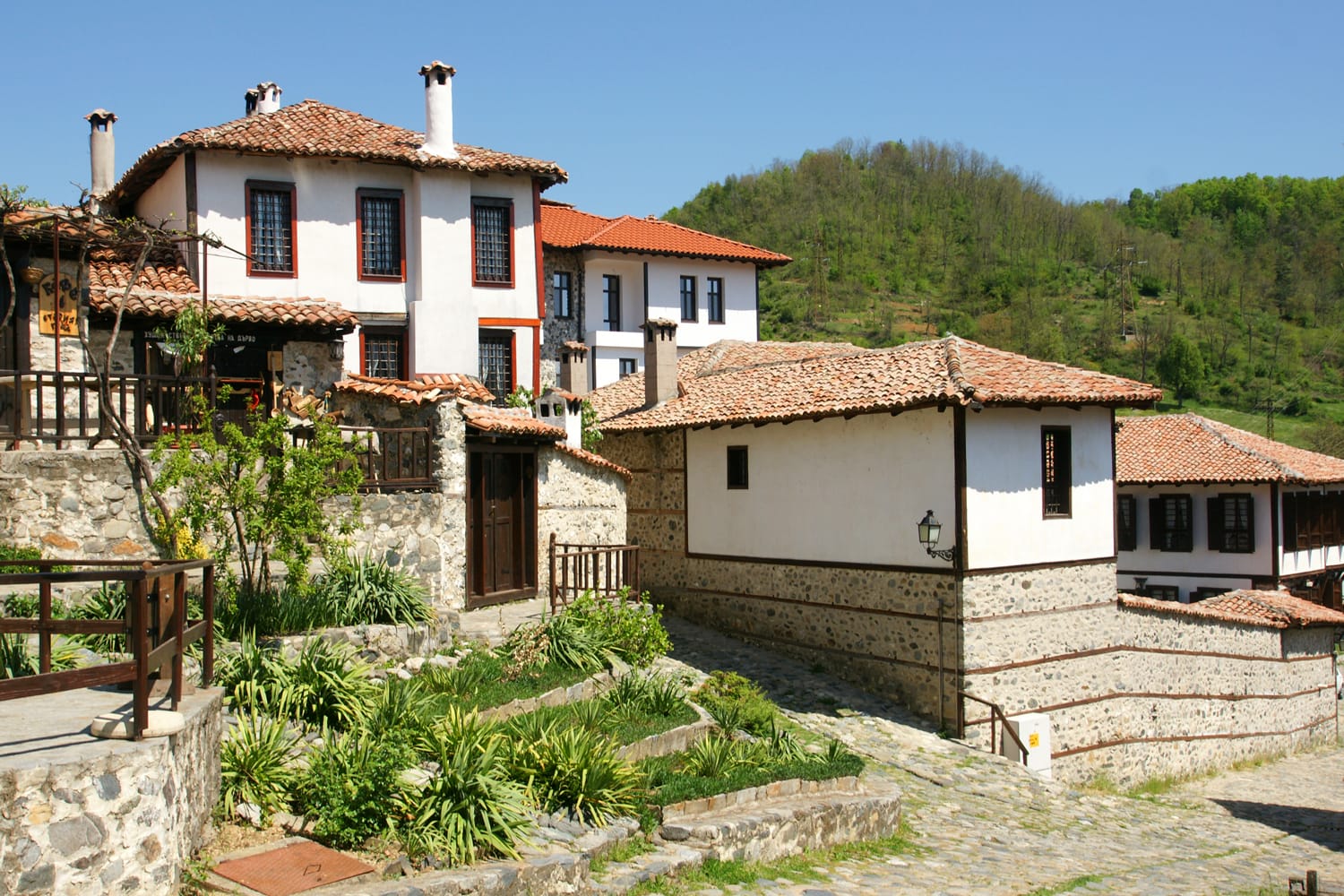
20. Zlatograd
Zlatograd is a small town hidden in the southernmost parts of the Rhodope Mountains on the border with Greece. The Old Town is absolutely charming with its white houses decorated with bay windows and round chimneys. However, it wasn’t until 2001 that the Old Town was restored and brought to new life as an ethnographic complex.

21. Trigrad Gorge and Devil’s Throat Cave
The Trigrad Gorge is without a doubt one of the most beautiful places in Bulgaria. The 7-kilometer long canyon cut by the Trigrad River is located in southern Bulgaria in the Rhodope Mountains. Squeezed between the river on one side and the vertical cliffs on the other, the gorge’s only road connects Trigrad to the nearest town of Devin. At the bottom of the gorge’s largest cliff is the area’s most popular tourist destination, the Devil’s Throat. Here, the river falls into the cave forming a spectacular 42-meter underground waterfall.

22. Rila Monastery
The Monastery of Saint Ivan of Rila is perhaps the most iconic destination in Bulgaria and one of the best day trips from Sofia. There’s hardly anyone that won’t be able to recognize the black-and-white striped arches of the monastery, the red-and-white striped facade, and the old stone tower. The monastery is beautifully frescoed and is a fine example of National Revival craftsmanship. The oldest building on the site is the Tower of Hrelja, and it dates back to the beginning of the 14th century. The Rila Monastery played an important role during Bulgaria’s National Revival. It’s not a surprise that the monastery is included as an UNESCO World Heritage Site. The monastery is hidden in the Rila Mountains in southwest Bulgaria and it was founded in the 10th century by the hermit Ivan of Rila.
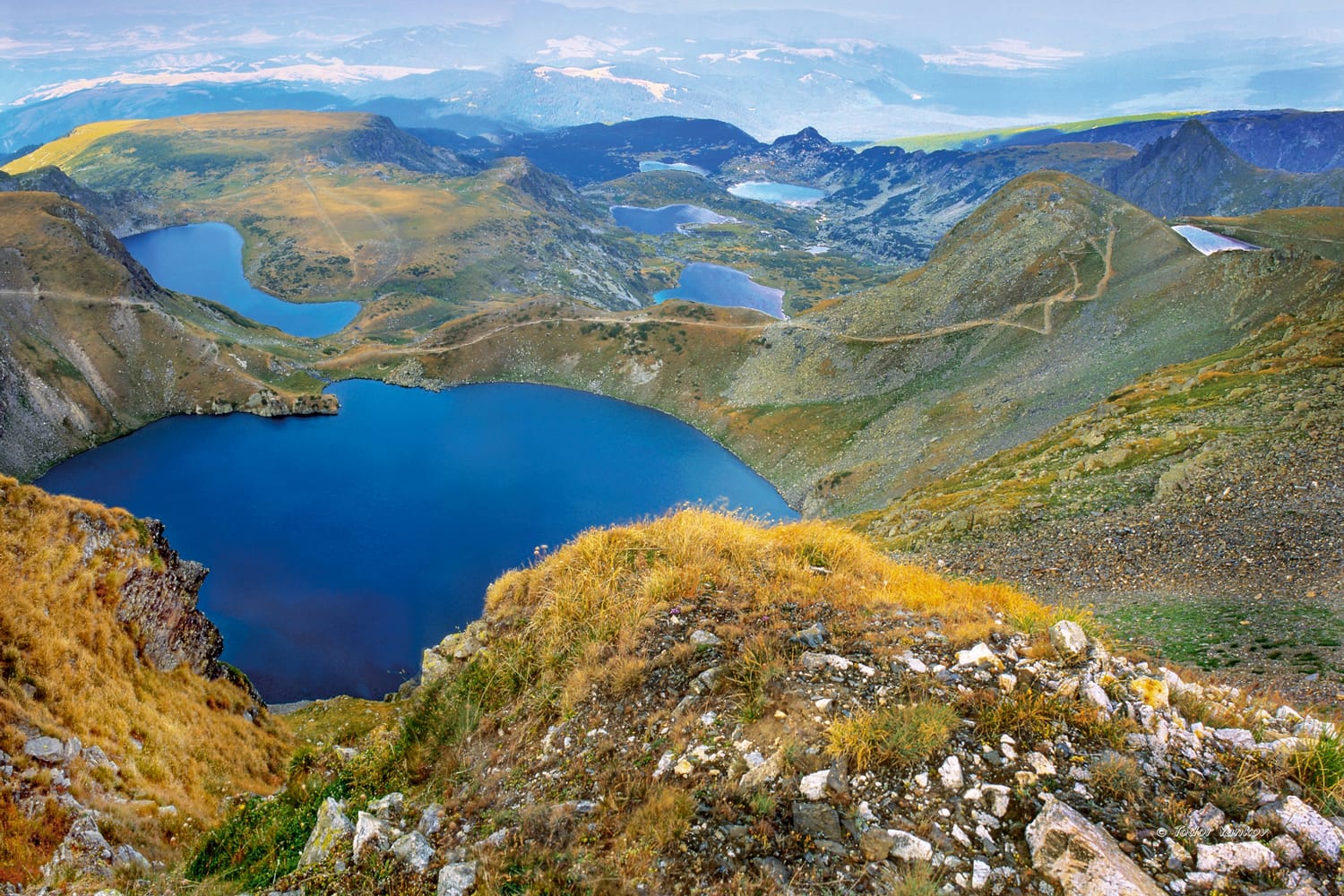
23. Seven Rila Lakes
Located in the northwest part of the Rila Mountains, Seven Rila Lakes is a natural area of stunning beauty. Hiking to the lakes uncovers epic scenic views of the rugged mountaintops. The Seven Rila Lakes is a group of glacier lakes, and the locals have given them names inspired mostly by their form: The Eye, The Kidney, The Tear, The Twin, The Trefoil, Fish Lake, and The Lower Lake. The lakes are located in Rila National Park, Bulgaria’s largest national park.
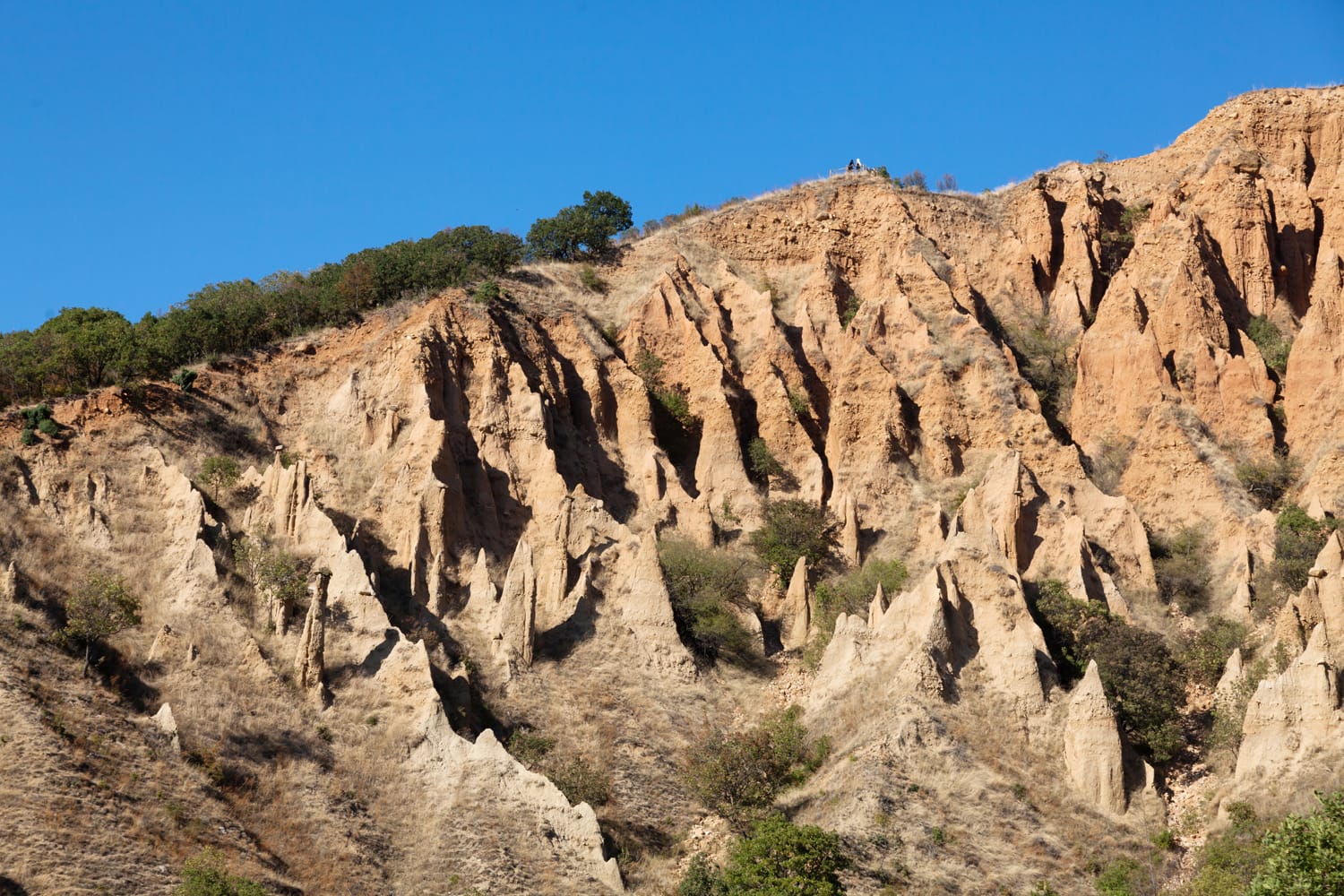
24. Stob Pyramids
The Stob Pyramids are another one of Bulgaria’s amazing natural phenomenon. If we have to believe the legend, these are actually wedding guests turned into stone. The reality is a bit different, however, as the earth pyramids were formed through weathering and erosion. The pyramids are about 10 – 12 meters high and have various shapes, some are conical and others are shaped like mushrooms. They are located near the village of Stob in the western part of the Rila Mountains.
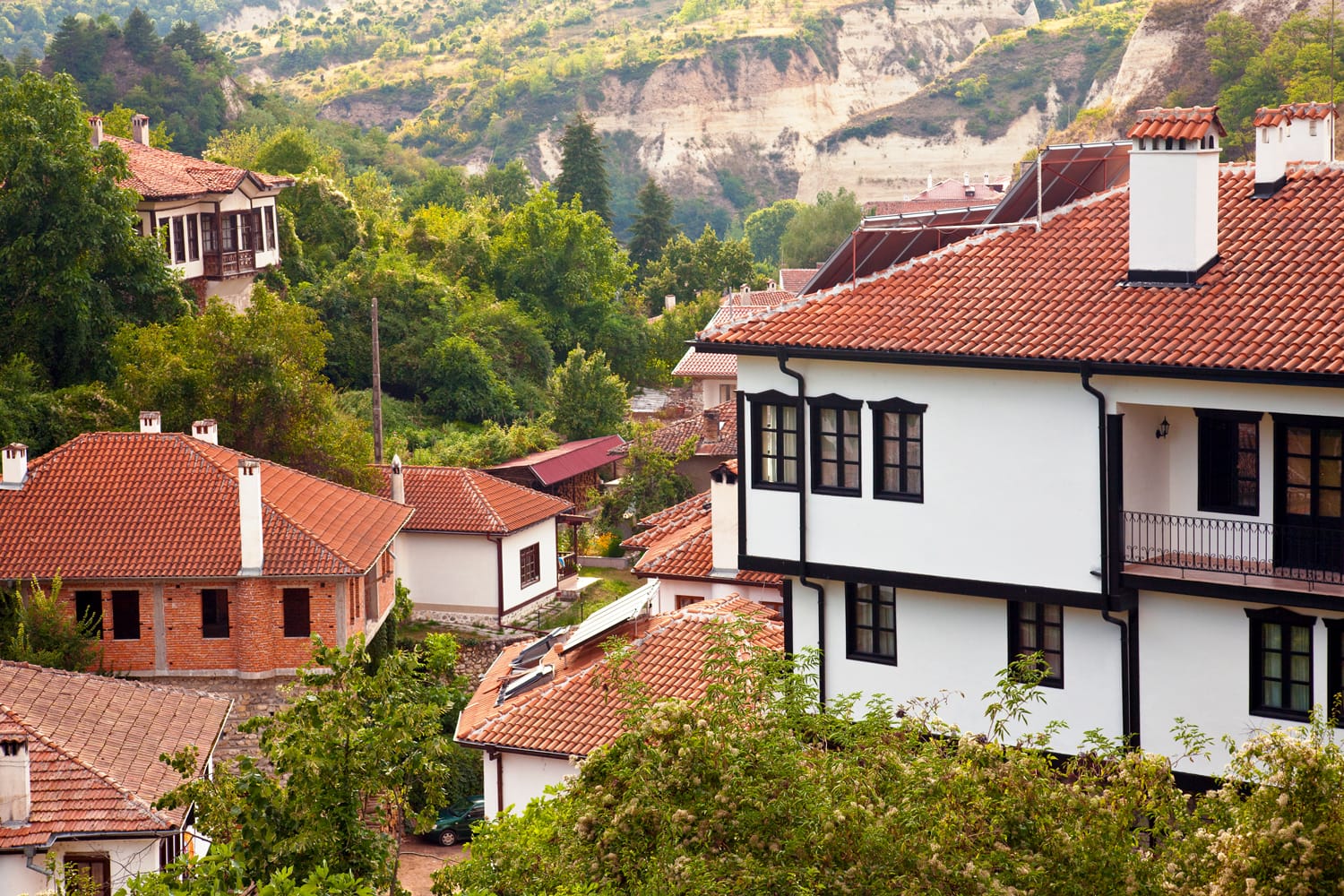
25. Melnik
Set against the dramatic landscape of sandstone mountains, Melnik is officially the smallest town in Bulgaria and perhaps the most charming. When in Melnik, visit the Kordopulov House – it’s the largest surviving National Revival house. It was built in 1754 for a wealthy Greek merchant, and it has wine production and storage facilities. Melnik is actually famous for its wine, so do not leave there without trying the special wine produced only in this region. For the best views of the Sand Pyramids of Melnik, climb to the St. Nicholas plateau.
It can sound a bit cliché, but Bulgaria is a real hidden gem in Europe. Still unknown and underexplored, it combines amazing, authentic experiences and stunning nature with lovely cities and quaint little towns and villages. It’s an up-and-coming destination and the above list of the top places to visit in Bulgaria is just a sneak peak into what this small Balkan country has to offer.



